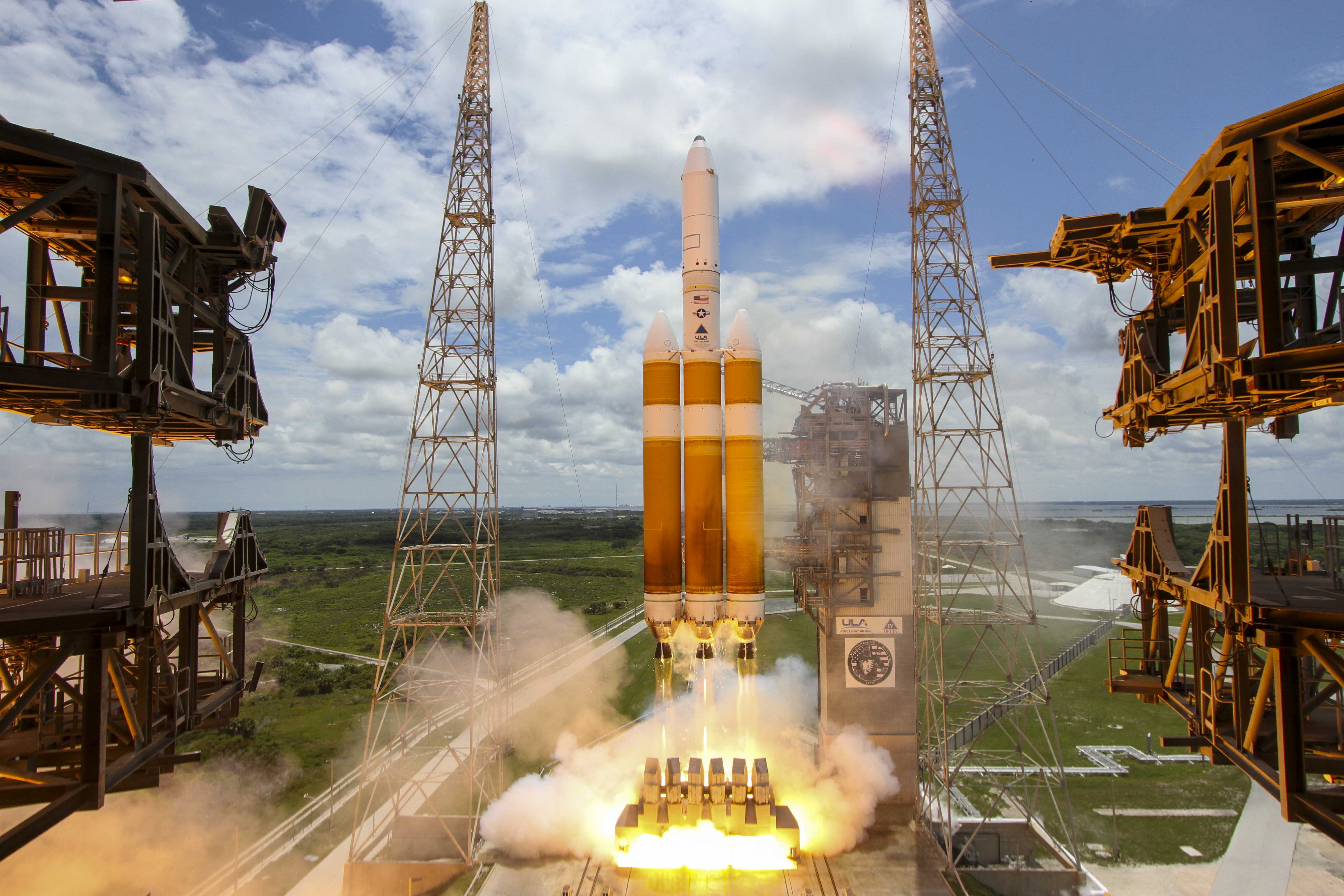CAPE CANAVERAL, Fla. — A U.S. spy satellite thundered toward orbit Saturday afternoon atop the most powerful rocket flying today, a 23-story Delta IV Heavy that blasted off from Cape Canaveral Air Force Station.
Firing engines from three boosters strapped together, the heavy-lift rocket rumbled from Launch Complex 37 pad with more than 2 million pounds of thrust, rising into low, puffy clouds that obscured the relatively rare sight from view for many early on in the flight.
The launch was the ninth since 2004 by the triple-bodied rocket, which was tasked with lifting a National Reconnaissance Office intelligence satellite directly into a high orbit more than 22,000 miles over the equator.
After flying southeast over the Atlantic Ocean, the mission was expected to take about six hours to complete before success could be declared.
Amateur spacecraft observers who study NRO missions believe this one, labeled NROL-37, was lifting a heavy eavesdropping satellite known as a Mentor or Advanced Orion.
In the neighborhood of 15,000 pounds, the satellite probably needed all the big rocket's might, including three burns by its Centaur upper stage engine, to reach its orbit.
At the NRO's request, ULA blacked out its launch webcast about six minutes into flight to preserve the mission's secrecy. By then, the Centaur had began firing and a protective shroud had split away from the satellite, indicating the launch was off to a good start.
The mission flew on its second attempt, after stormy weather scrubbed a first try Thursday afternoon.
Saturday's forecast started out similarly gloomy but steadily improved, prompting the launch team's "go" for an on-time liftoff at 1:51 p.m. ET.
The mission could be the first of three within just two weeks on the Air Force's Eastern Range, which schedules missions and is responsible for protecting the public during launches from Cape Canaveral.
SpaceX is targeting a Falcon 9 launch of a pair of commercial communications satellites as soon as Tuesday morning. ULA plans to follow on June 24 with launch of an Atlas V rocket and Navy communications satellite.
The Delta IV Heavy mission was ULA's first since March 22, when an Atlas V experienced an early main engine shutdown that required investigation. With both Delta and Atlas launching this month, the company's fleet appears to be fully back in action.
The mission was the second of up to four that ULA could launch this year for the NRO, including one possible next month from Cape Canaveral on an Atlas V.
The Delta IV Heavy's "most powerful rocket" status could be eclipsed late this year if SpaceX introduces its Falcon Heavy — more than twice as powerful — as planned.
And NASA in late 2018 is targeting its first launch of the even bigger Space Launch System rocket, which will be the most powerful rocket ever, topping the space agency's Saturn V moon rockets.
Follow James Dean on Twitter: @flatoday_jdeanand


